Today we set out to visit a couple of sites in the Battle of the Somme and to learn more about the tragic events of July-Nov 1916. Our first stop was a small cemetery just west of Albert, near the town of Contay. We pulled off the road and alongside the wall of the war cemetery, one of numerous maintained by the CWGC (Commonwealth War Graves Commission).
We were looking for the grave marker of Alexander Ernest Sample, Meghan's great great uncle. This was the first time we had visited a war cemetery in search of a particular person and Rob had even provided a little history about him. We located the grave without difficulty and took a couple of photos of the grave marker and the cemetery in general. It was saddening to learn that Alexander had only been 28 when he was killed in the Battle of the Somme, dying in his brother’s arms. We were the only ones at that particular cemetery and we soon headed back towards Albert. From Albert, we went to Beaumont-Hamel, which is memorial to the Royal Newfoundland regiment, and a very well preserved battlefield. As we approached the area, we noticed a large roped-off area, pockmarked like a lunar landscape and very similar to what we had seen at Verdun.
We were just in time for a guided tour which out of pure coincidence included six other Canadians. The tour through the battlefield lasted about forty minutes, which was approximately how long the battle for the Royal Newfoundland Regiment lasted on July 1, 1916. The attack at Beaumont-Hamel was poorly planned and commanded. The German front line had been bombed by artillery for a week in advance but on the day of the planned attack, the artillery stopped before the troops advanced. This was the first warning for the Germans. Commanders of the British forces assumed that most of the German lines and troops would be destroyed and this was to be an extremely costly mistake. They didn’t even bother to send out soldiers to do any reconnaissance. Then, a nearby explosion of a mine was ten minutes too early and alerted the Germans of an attack.
The allied troops were ordered "over the top", that is, out of the trenches, and they began walking through no-man’s land, not expecting much retaliation (and loaded down with 70 lb bags). Another tactical error was that gaps had been left in the barbed wire, which meant that it created a bottleneck, and the perfect opportunity for the Germans to pick off soldiers. The first troops from a British division were mowed down by German machine gunners and the trenches were shelled. It turned out that the German lines had sustained very little damage in fact and the Germans were so well dug in (some 7-8 m underground) and fortified, that they simply walked out, and took their posts at their weapons. In addition to this, the Germans had the advantage since they were on higher ground. The trenches quickly clogged up with the wounded and dead. The Newfoundland Regiment noticed the clogged trenches but had no choice but to keep going – the order to stop the attack was not given. Since they were not in direct line of sight of the Germans, they climbed out of the trenches and towards the hill where the Caribou (the emblem of the regiment) monument now stands.
As they crested the hill, they too were prime targets for the Germans. A few of the regiment managed to reach the “Danger Tree” (a thin tree and the only one that offered any sort of cover) and as they were approaching it, they were supposed to be covered on their right flank by British troops. However, the British troops were an hour delayed in arriving to that point as they had to manoeuver through the clogged trenches. In the first half hour of battle, the Newfoundland Regiment sustained 85% of their casualties – of the 780 men that went forward that morning, only 68 were available for roll call the following day. For all intents and purposes, the regiment had been wiped out and along with it, a portion of Newfoundland’s next generation.
I had recently read and excellent book titled “Back to the Front”, by Stephen O’Shea. As the author walks the Western Front, he often cites the carelessness with which lives were sacrificed because of poor leadership and planning. It was one thing to read about it in a book, but to see the battlefield with your own eyes, it really made me wonder how the commanders of these troops could have made such simple mistakes that were so costly for tens of thousands. With the tour over, we continued to walk around the rest of the battlefield and visited the Y-Ravine cemetery and the monument to the 51st (Highland) Division Memorial. Just past this memorial was a small cemetery. It was quite unlike any of the others we’ve seen and it turns out that it was the site of a shell crater where the soldiers were buried, hence explaining its circular shape.
From the cemetery, we walked back to the information centre. We stepped into the centre and learned more details about the battle, Newfoundland (which was its own dominion, not having been joined with Canada), the lives of some of the soldiers and the effect that this battle had on the community back in Newfoundland. On our way out, we were given little “Canada Remembers” pins, put out by Veteran Affairs, which were very well designed.
Our next stop was to visit Thiepval and on the way we made a brief stop at the Ulster (Northern Ireland) tower memorial, erected to commemorate the men of the 36th (Ulster) Division. This memorial is quite unusual in its design. We walked inside the tower to learn that the tower is a replica of Helen’s tower, which “stands proudly overlooking the Clandeboye Estate near Bangor, Co Down …The Ulster Division did much of its training at Clandeboye so it was decided that this prominent landmark that would have been so well known to the men of the Division would be a fitting memorial”. We could see the Thiepval memorial from the Ulster memorial and we were soon at it. At 45m high, it is the largest British war memorial in the world and it seemed fitting for what is known as “the bloodiest day of the British Army”.
On the first day of the Battle of the Somme, 60,000 British troops had been made casualties and by the end of the battle, nearly four months later, the tally was at 420,000. This memorial commemorates the 72,205 men from the British and South African armies that were declared missing as part of the battle of the Somme from 1915 and 1918. The sheer numbers are staggering and as you look at names inscribed on the walls (those of the missing), and the rows of grave markers behind the monument, it is hard to imagine that each one of these was a person whose life was prematurely ended. We also visited the information center at the memorial which was very well laid out and provided an excellent overview of the war, the Somme and also several short movies about the war. Our final stop of the day was at Lochnagar crater, in La Boisselle. At 100m in diameter and 30m in depth, it is the only crater accessible to the public. It is quite unbelievable and hard to fathom that a mine had created a crater this large. It too was the sight of appalling losses – nearly 1,200 French died in the attack against La Boisselle. We walked around the crater to take in the enormity of it and then proceeded to head back to camp.
Memorials of the Somme
Sunday, March 31, 2013
 Albert, Picardy, France
Albert, Picardy, France
Other Entries
-
101Day trip to Sitges
Feb 1940 days prior Sitges, Spain and Canary Islandsphoto_camera11videocam 0comment 0
Sitges, Spain and Canary Islandsphoto_camera11videocam 0comment 0 -
102Cassoulet in Carcassonne
Feb 2633 days prior Carcassonne, Francephoto_camera19videocam 0comment 2
Carcassonne, Francephoto_camera19videocam 0comment 2 -
103Albi: Toulouse-Lautrec & amazing cathedral
Feb 2732 days prior Albi, Francephoto_camera15videocam 0comment 0
Albi, Francephoto_camera15videocam 0comment 0 -
104Bastides in the Lot
Feb 2831 days prior Cordes-sur-Ciel, Francephoto_camera24videocam 0comment 3
Cordes-sur-Ciel, Francephoto_camera24videocam 0comment 3 -
105Return to Rocamadour
Mar 0130 days prior Rocamadour, Francephoto_camera9videocam 0comment 0
Rocamadour, Francephoto_camera9videocam 0comment 0 -
106Market Day in Sarlat
Mar 0229 days prior Sarlat-la-Canéda, Francephoto_camera21videocam 0comment 1
Sarlat-la-Canéda, Francephoto_camera21videocam 0comment 1 -
107Marquessac Gardens
Mar 0328 days prior Vezac, Francephoto_camera29videocam 0comment 2
Vezac, Francephoto_camera29videocam 0comment 2 -
108Three "Plus Beaux Villages"
Mar 0427 days prior Domme, Francephoto_camera18videocam 0comment 0
Domme, Francephoto_camera18videocam 0comment 0 -
109A day for chores
Mar 0526 days prior Sarlat-la-Canéda, Francephoto_camera13videocam 0comment 1
Sarlat-la-Canéda, Francephoto_camera13videocam 0comment 1 -
110Relaxing in the Dordogne
Mar 0922 days prior Beynac-et-Cazenac, Francephoto_camera54videocam 0comment 2
Beynac-et-Cazenac, Francephoto_camera54videocam 0comment 2 -
111Prehistoric Art in the Dordogne
Mar 1120 days prior Les Eyzies-de-Tayac, Francephoto_camera15videocam 0comment 1
Les Eyzies-de-Tayac, Francephoto_camera15videocam 0comment 1 -
112Market Day in Brantome
Mar 1516 days prior Brantome, Francephoto_camera23videocam 0comment 1
Brantome, Francephoto_camera23videocam 0comment 1 -
113Chateau de Fontainebleau
Mar 1714 days prior Fontainebleau, Francephoto_camera53videocam 0comment 0
Fontainebleau, Francephoto_camera53videocam 0comment 0 -
114Chateau de Vaux-le-Vicomte
Mar 1912 days prior Vaux-le-Vicomte, Francephoto_camera51videocam 0comment 0
Vaux-le-Vicomte, Francephoto_camera51videocam 0comment 0 -
115Paris
Mar 274 days prior Paris, Francephoto_camera139videocam 2comment 2
Paris, Francephoto_camera139videocam 2comment 2 -
116WWI Museum in Peronne
Mar 283 days prior Peronne, Francephoto_camera41videocam 0comment 1
Peronne, Francephoto_camera41videocam 0comment 1 -
117"Van"dalism
Mar 292 days prior Peronne, Francephoto_camera3videocam 0comment 0
Peronne, Francephoto_camera3videocam 0comment 0 -
118Memorials of the Somme
Mar 31 Albert, Francephoto_camera29videocam 0comment 0
Albert, Francephoto_camera29videocam 0comment 0 -
119Vimy Ridge
Apr 011 day later Vimy, Francephoto_camera26videocam 0comment 0
Vimy, Francephoto_camera26videocam 0comment 0 -
120Ypres and WWI Memorials
Apr 033 days later Ypres, Belgiumphoto_camera57videocam 0comment 0
Ypres, Belgiumphoto_camera57videocam 0comment 0 -
121Belgian Treats in Bruges
Apr 055 days later Brugge, Belgiumphoto_camera55videocam 0comment 0
Brugge, Belgiumphoto_camera55videocam 0comment 0 -
122More Belgian Treats in Ghent
Apr 066 days later Ghent, Belgiumphoto_camera28videocam 0comment 1
Ghent, Belgiumphoto_camera28videocam 0comment 1 -
123Moules in Dunkerque
Apr 077 days later Dunkerque, Francephoto_camera11videocam 0comment 1
Dunkerque, Francephoto_camera11videocam 0comment 1 -
124Côte d’Opal
Apr 099 days later Wimereux, Francephoto_camera14videocam 0comment 1
Wimereux, Francephoto_camera14videocam 0comment 1 -
125Van repaired and a visit to Brighton
Apr 1111 days later Brighton, United Kingdomphoto_camera16videocam 0comment 1
Brighton, United Kingdomphoto_camera16videocam 0comment 1 -
126Open Air Museum in Arnhem
Apr 1414 days later Arnhem, Netherlandsphoto_camera55videocam 0comment 2
Arnhem, Netherlandsphoto_camera55videocam 0comment 2 -
127Amsterdam
Apr 1717 days later Amsterdam, Netherlandsphoto_camera72videocam 0comment 2
Amsterdam, Netherlandsphoto_camera72videocam 0comment 2 -
128Aalsmeer Flower Auction
Apr 1818 days later Aalsmeer, Netherlandsphoto_camera47videocam 3comment 0
Aalsmeer, Netherlandsphoto_camera47videocam 3comment 0 -
129Cheese Market in Alkmaar
Apr 1919 days later Alkmaar, Netherlandsphoto_camera62videocam 0comment 0
Alkmaar, Netherlandsphoto_camera62videocam 0comment 0 -
130The Historic Triangle
Apr 2020 days later Hoorn, Netherlandsphoto_camera81videocam 2comment 3
Hoorn, Netherlandsphoto_camera81videocam 2comment 3 -
131Fishing Village of Marken
Apr 2121 days later Marken, Netherlandsphoto_camera21videocam 0comment 1
Marken, Netherlandsphoto_camera21videocam 0comment 1 -
132Edam, Tulips & Windmills
Apr 2222 days later Lisse, Netherlandsphoto_camera49videocam 0comment 1
Lisse, Netherlandsphoto_camera49videocam 0comment 1 -
133Canal Boating on the Bourgogne
May 0131 days later Migennes, Francephoto_camera110videocam 5comment 3
Migennes, Francephoto_camera110videocam 5comment 3 -
134Trapped by the Floods
May 0434 days later Fleurey-sur-Ouche, Francephoto_camera48videocam 1comment 0
Fleurey-sur-Ouche, Francephoto_camera48videocam 1comment 0 -
135Canal Boating on the Lateral Canal to the Loire
May 0939 days later Briare, Francephoto_camera99videocam 3comment 4
Briare, Francephoto_camera99videocam 3comment 4 -
136Dinan
May 1343 days later Dinan, Francephoto_camera42videocam 0comment 1
Dinan, Francephoto_camera42videocam 0comment 1

 Albert, Picardy, France
Albert, Picardy, France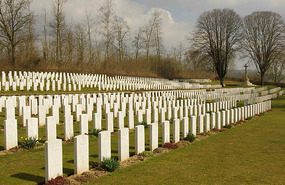
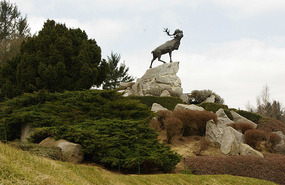
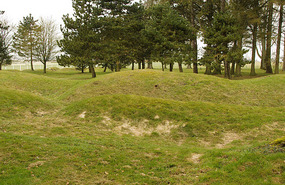
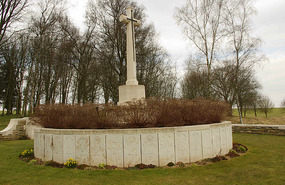
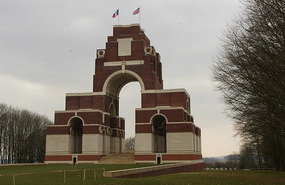





























2025-05-22